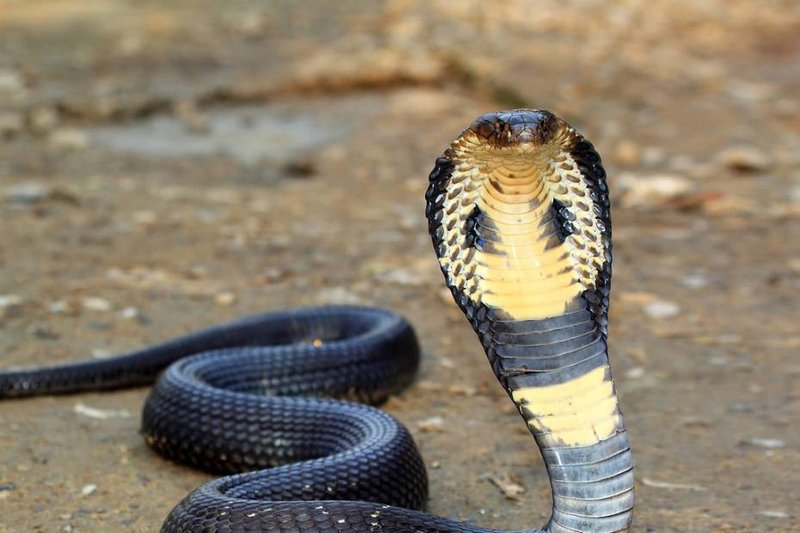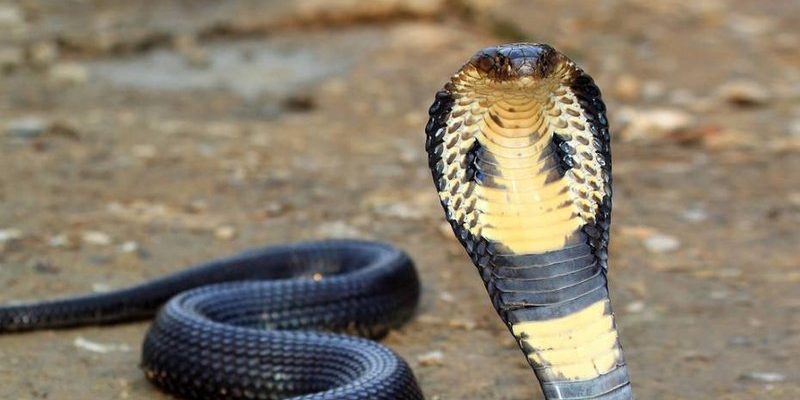
Picture this: the Indian cobra, with its striking hood and dark, menacing glance, is making a meal out of what’s available in its territory. The way it hunts and feeds is a mix of instinct, strategy, and skill, making it an impressive predator in the animal kingdom. Let’s dive into the fascinating world of the Indian cobra’s diet and how it cleverly hunts its prey.
Understanding the Indian Cobra’s Diet
The diet of the Indian cobra is quite diverse, making it an adaptable predator. Typically, these snakes feed on a variety of animals, including:
- Rodents like rats and mice
- Birds, including their eggs
- Frogs and lizards
- Other smaller snakes
Here’s the thing: having a diverse menu allows the Indian cobra to thrive in different environments, whether it’s a forest, grassland, or even urban areas. This flexibility means that if one type of prey becomes scarce, the cobra can switch to something else without much trouble. It’s like being a cook who can whip up a meal from whatever ingredients are left in the pantry.
Now, you might be wondering how these snakes catch their meals. They rely on their excellent sense of smell and keen eyesight to locate their prey. Cobras can detect movements and scents from a distance, which is crucial when hunting. Imagine being able to sniff out your favorite food from miles away—that’s how these snakes zero in on their next meal!
Hunting Techniques of the Indian Cobra
When it comes to hunting, the Indian cobra has several techniques up its sleeve. The primary method is ambush hunting. This means the cobra will find a hiding spot and patiently wait for an unsuspecting victim to wander by. It’s a strategy built on patience and stealth.
The cobra’s ability to blend into its surroundings makes it a master of disguise. Picture a skilled hunter with camouflage gear. When a prey animal, like a mouse, comes too close, the cobra strikes with lightning speed. The strike is usually accurate, and with its venom—a potent cocktail of neurotoxins—it immobilizes its meal almost instantly.
Additionally, these snakes can also engage in active hunting. This method involves roaming around their territory in search of food. They’ll slowly glide through the brush, keeping an eye out for potential meals. This approach is less common, but when resources are scarce, it can be quite effective.
The Role of Venom in Hunting
You might be curious about the role of venom in the Indian cobra’s hunting strategy. The venom serves a dual purpose: it not only subdues the prey but also begins the process of digestion. Once the cobra bites its victim, the venom contains enzymes that break down the prey’s tissues, making it easier to digest later on.
The Indian cobra’s venom is mainly neurotoxic, meaning it affects the nervous system of its prey. This is crucial because it causes paralysis, preventing the prey from escaping. Imagine a puppet with its strings cut—once the snake bites, the prey is rendered helpless in a matter of seconds.
But here’s the twist: the cobra doesn’t always inject venom. Sometimes, they might use a less potent bite, especially if they’re just trying to catch something small. It’s a strategic choice, much like a chef deciding how much spice to add to a dish based on the guest’s preferences.
Feeding Behavior and Patterns
Feeding patterns of the Indian cobra can vary depending on the time of day and availability of prey. These snakes are primarily nocturnal, which means they do most of their hunting at night. Nighttime hunting offers several advantages: it’s cooler, and their prey is often more active.
Additionally, during the breeding season, you might find these snakes hunting more aggressively. Males, particularly, may roam further in search of food to nourish themselves—and make their search for mates more successful. It’s quite the balancing act, juggling the need to eat while also searching for a partner!
After a successful hunt, cobras typically consume their prey whole. Their flexible jaws allow them to swallow animals much larger than their heads. This is another example of their adaptability. Picture a snake that can stretch its mouth wide enough to devour a meal that might seem impossible—that’s the ingenious biology of the Indian cobra at work!
Challenges and Adaptations
While the Indian cobra is a skilled hunter, it does face challenges. One major threat is habitat loss due to urbanization and agricultural expansion. As their environments shrink, these snakes may struggle to find food.
Moreover, cobras also face threats from other predators, including larger snakes, birds of prey, and even humans. Despite these dangers, the Indian cobra has developed adaptations that enhance its chances of survival. For instance, its ability to remain hidden and strike suddenly is key to evading predators while hunting.
Also, the cobra’s venom has evolved over time, making it not just a tool for hunting, but also a defense mechanism. When threatened, these snakes may display their hoods and hiss loudly, trying to scare off would-be attackers. It’s a smart way to avoid confrontation, similar to how some animals might bluff their size to intimidate others.
The diet and hunting strategies of the Indian cobra are fascinating reflections of its adaptive nature. These snakes play a crucial role in their ecosystems by helping to control populations of rodents and other small animals.
By understanding how they hunt and what they eat, we can appreciate the delicate balance of nature. The Indian cobra, with its incredible hunting skills and dietary flexibility, showcases the beauty of adaptation and survival in the wild.
So, next time you think about the Indian cobra, remember it not just as a venomous snake but as an integral part of its ecosystem, thriving through its impressive skills and strategies. Isn’t nature incredible?

